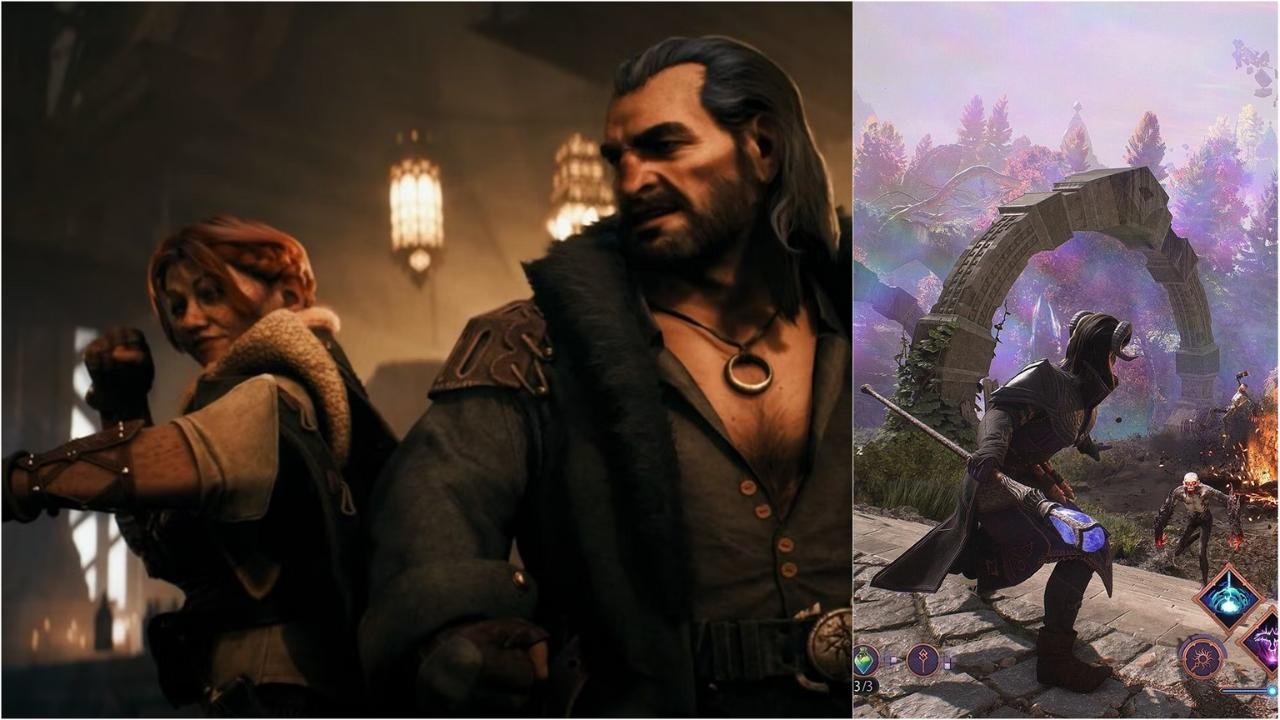Let’s talk about the Combat system in Dragon Age: The Veilguard and what it’s shaping up to be. If you have played their last two games, you already know that BioWare’s been walking on thin ice for a while.
After Anthem and Mass Effect: Andromeda tanked, it left us wondering, “Can BioWare ever bounce back?” Well, they’re pulling out all the stops to make The Veilguard their redemption arc – and not just with a killer story, but a combat system that’s got everyone buzzing.
Combat Style – Hack, Slash, and Spell-Slinging

At its core, The Veilguard is a third-person hack-and-slash RPG, and if you’ve played Final Fantasy XV or XVI, you’ll feel like you’ve seen this dance before.
The game iss fast-paced, slash-and-burn combat mixed with spell-slinging and tactical combat.
It’s as if BioWare mashed together your favorite fantasy RPG with a bit of Final Fantasy flair, and honestly? I’m here for it.
Abilities and Skill Trees

Every character in The Veilguard has three active abilities and one ultimate ability (aka the Big Gun).
Unlocking them is tied to a skill tree, because what’s an RPG without a web of abilities to obsess over, right?
While we haven’t seen much of the progression details yet, I’d bet my best loot it’ll be your classic “level up and pick your path” kind of deal.
One of the teasers showed a warrior class, and the player had customized them to either be a tank that laughs off damage or a damage dealer who’s basically a walking wrecking ball.
So yeah, plenty of choices to turn your character into someone as you see fit.
Runes, Weapons and Gears

This wouldn’t be a proper RPG without some sweet gear, and The Veilguard is packing some heat
Runes are your go-to for tweaking both active and passive abilities.
You can slot up to three at a time, which gives you a solid amount of wiggle room to play with.
Gear in The Veilguard keeps things simple – it’s all about damage and stagger effects.
It’s streamlined, with items focusing on cool modifiers instead of a giant spreadsheet of numbers.
Its simmilar to how Monster Hunter lets you focus on builds instead of stat anxiety.
Your companions get gears too, which means you can turn your squad into absolute powerhouse if know how to play your cards right.
Missions and Managing Your Squad

Just like its predecessor, Dragon Age Inquisition, The Veilguard set up with a mission-based system.
And just like Inquisition you’ll pick which two companions are tagging along on mission.
You’ll also be able to customize their abilities and gear, which means you can tailor your team to complement your playstyle.
In combat, you’re not just sitting back and letting AI do the work for.
No sir, you’re in charge as well!
If you’ve played modern Final Fantasy games, you know the drill – you’re the coach, and your team better follow your orders or get benched.
Your companions might not be the star of the show (that’s your job), but they’re definitely pulling their weight.
Their attack stats are lower than the main character’s, but I’m guessing that’s by design. Becouse, they’re there to support you, not steal your thunder.
Primers, Detonators, and Stagger

Now about combat mechanics, Enemy weaknesses play a major role here – it’s all about exploiting those weaknesses.
The game’s UI makes it pretty clear which abilities will hit the hardest, so you won’t be left guessing in the heat of battle.
And then there is primer and detonator system that adds another layer of strategy in this game.
Once you prime your enemies you can just hit them with detonation.
It’s one of those mechanics that makes you feel like a genius when you pull off the perfect sequence.
Like setting up a strike in bowling and watching all the pins crash down – oh so satisfying.
And then there’s stagger – your best friend for crowd control.
Hit enemies enough to fill their stagger meter (yep, the purple bar), and they’ll be vulnerable to finishers or just take a ton more damage.














